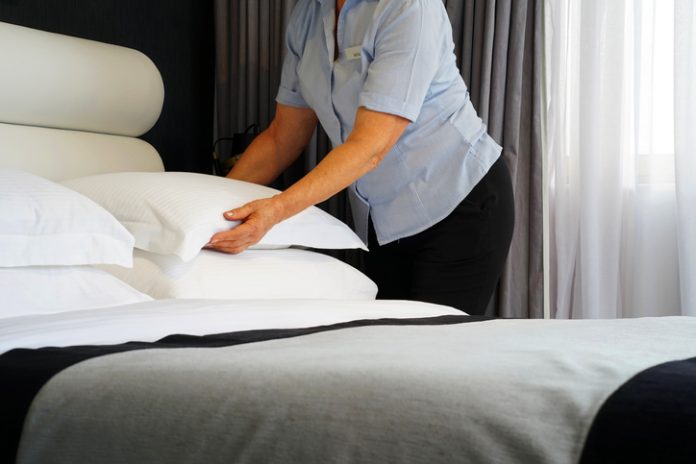
According to the U.S. Environmental Protection Agency (EPA), pesticides alone cannot eliminate bed bug infestations. “Bed bug control can only be maintained through a treatment strategy that includes a variety of techniques plus careful attention to monitoring,” according to the agency. “Proper use of pesticides may be part of the strategy, but will not by itself eliminate bed bugs.”
A key part of a hotel’s pest control strategy is training staff, particularly housekeepers, to recognize and identify bed bugs when they come across them. According to a National Pest Management Association survey, bed bugs are frequently misidentified—in 2018, 84 percent of pest control professionals reported that they had been contacted to treat another pest only to find bed bugs upon arrival.
Below are the EPA’s guidelines for identifying and finding bed bugs.
What Do Bed Bugs Look Like?
Adult bed bugs are the size of an apple seed—a quarter of an inch long or smaller. If they have not recently fed, their bodies are long and brown with a flat, oval-shaped body. If they have recently fed, they are balloon-like, reddish-brown, and more elongated. They produce a “musty-sweetish” odor through glands on the lower side of their body.
Young bed bugs, or nymphs, are generally smaller than adults and translucent, or whitish-yellow in color, according to the EPA. If not recently fed, they are difficult to spot with the naked eye.
Bed bug eggs are generally the size of a pinhead and pearl-white in color.
Signs of Bed Bugs
Bed bugs can be difficult to find, but these pests do leave behind physical signs of their presence. When cleaning a guestroom and changing sheets, hotel staff should look for the following, according to EPA guidelines: rusty or reddish stains on bed sheets or mattresses that are caused by crushed bugs; dark spots, which are bed bug excrement; eggs and eggshells—tiny, pale yellow skins that nymphs shed as they grow; and live bed bugs.
Where to Look
According to the EPA, bed bugs can be found on mattresses and box springs near the piping, seams, and tags, but also in cracks on the bed frame and headboard. These pests may also hide in the seams and between the cushions of chairs and sofas, in curtains, in drawer joints, in electrical plugs and appliances, under loose wallpaper and hangings, where the wall meets the ceiling, and in the head of a screw, according to the EPA.











